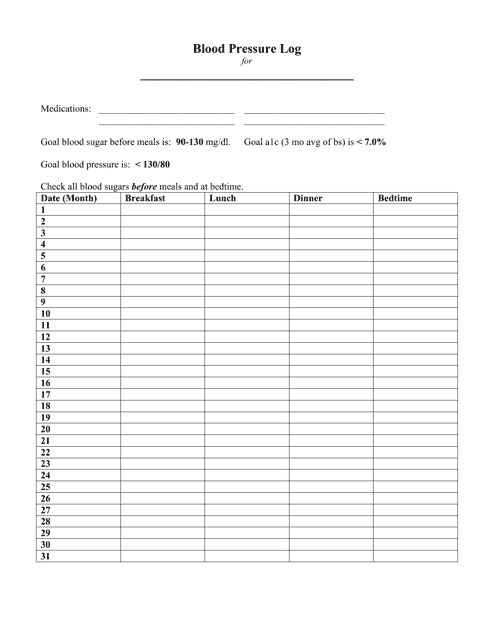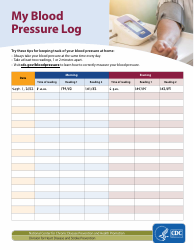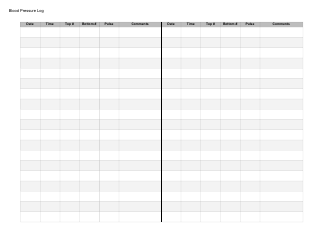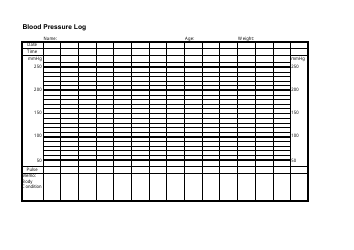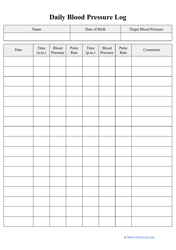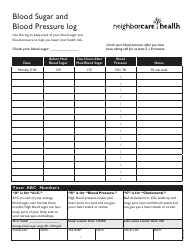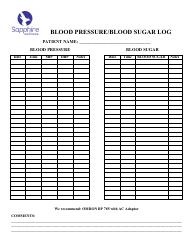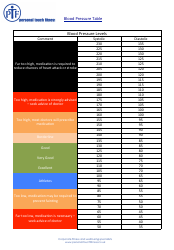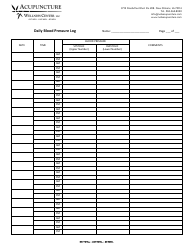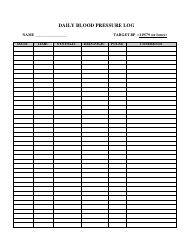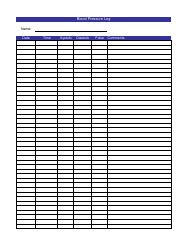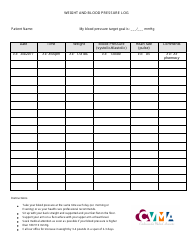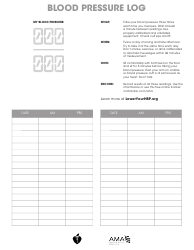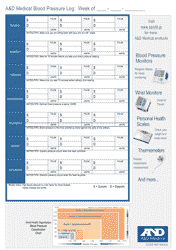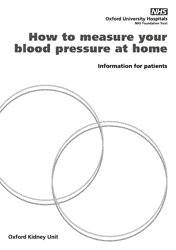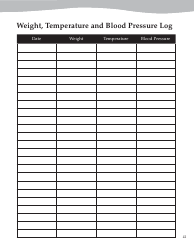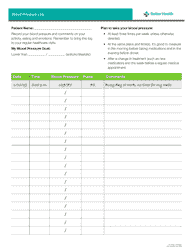Blood Pressure Log - Table
A blood pressure log table is used to track and record a person's blood pressure readings over time. It helps individuals and healthcare professionals monitor and manage blood pressure levels and identify any patterns or changes.
The individual who measures their blood pressure is responsible for filing the Blood Pressure Log - Table.
FAQ
Q: What is a blood pressure log?
A: A blood pressure log is a record of your blood pressure measurements over time.
Q: Why is it important to keep a blood pressure log?
A: Keeping a blood pressure log helps you and your healthcare provider track your blood pressure levels and monitor your overall cardiovascular health.
Q: How do I use a blood pressure log?
A: To use a blood pressure log, record your blood pressure measurements including the date, time, and reading. You can use a printable log sheet or a smartphone app.
Q: How often should I measure my blood pressure?
A: Talk to your healthcare provider to determine how often you should measure your blood pressure. Typically, it's recommended to monitor it regularly, especially if you have hypertension or other cardiovascular conditions.
Q: What should I do if my blood pressure is high?
A: If your blood pressure is consistently high, it's important to consult your healthcare provider for further evaluation and management. They may recommend lifestyle changes or prescribe medications to help lower it.
Q: Can I use a blood pressure log to diagnose hypertension?
A: No, a blood pressure log alone cannot diagnose hypertension. It is used as a tool to monitor and track your blood pressure levels, but a diagnosis should be made by a healthcare professional based on multiple measurements and assessments.
Q: Should I share my blood pressure log with my healthcare provider?
A: Yes, it's beneficial to share your blood pressure log with your healthcare provider. They can review the data and use it to make informed decisions about your treatment plan.
Q: Can I track my blood pressure using a smartphone app?
A: Yes, there are many smartphone apps available that allow you to track and record your blood pressure measurements. These apps often provide charts and graphs to help you visualize your progress.
Q: Is it necessary to track both systolic and diastolic blood pressure?
A: Yes, it is important to track both your systolic (top number) and diastolic (bottom number) blood pressure. These measurements provide different information about your cardiovascular health.
